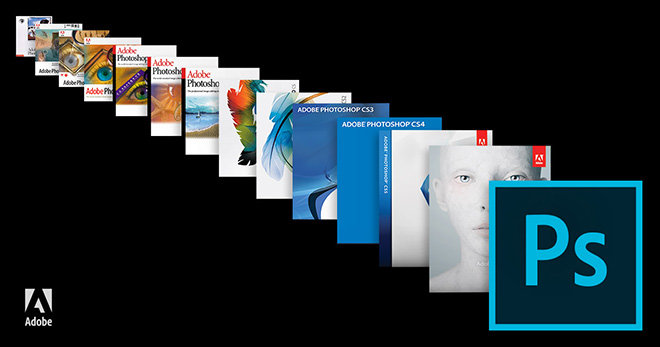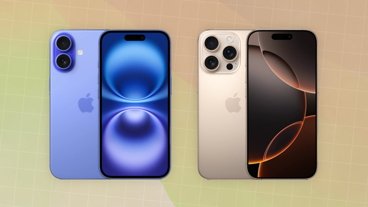Adobe's Photoshop notched another milestone when it turned 25 years old on Thursday, marking a quarter century since the venerable software brought digital image editing to the masses as a Mac exclusive.
Apple's ties to Photoshop go back to the beginning. In 1987, then-PhD student Thomas Knoll used his monochrome Macintosh Plus to program a simple grayscale pixel imaging program called Display, laying the foundation for what would become Photoshop under Adobe license in 1989.
With the help of his brother John, who worked for LucasFilm's Industrial Light & Magic at the time, Knoll and Adobe released the first edition of Photoshop in 1990 on Apple's Macintosh platform.
"For 25 years, Photoshop has inspired artists and designers to craft images of stunning beauty and reality-bending creativity," said Shantanu Narayen, Adobe president and CEO. "From desktop publishing, to fashion photography, movie production, website design, mobile app creation and now 3D Printing, Photoshop continues to redefine industries and creative possibilities. And today that Photoshop magic is available to millions of new users, thanks to Adobe Creative Cloud."
Adobe has created a special webpage dedicated to Photoshop's 25th anniversary that features an interview with Thomas Knoll and highlights works from prominent artists who use the program. Knoll will participate in a Reddit Ask Me Anything session at 2 p.m. Pacific on Thursday.
The company also released a new TV commercial celebrating the occasion, with images from movies that used Photoshop in their making, including Avatar, Gone Girl, How to Train Your Dragon 2 and Shrek.
Finally, Adobe is running a contest through its Behance online sharing platform to showcase 25 visual artists under the age of 25 who use Photoshop. Participants can upload projects to Behance using the tag "Ps25Under25" for a chance to be featured for two weeks on Photoshop's official Instagram feed.
From humble beginnings, Photoshop has grown into a dominant force in creativity that now includes mobile apps. Last year, Adobe launched Lightroom for iPhone and Photoshop Mix, bringing powerful, purpose-built image editing to Apple's mobile devices.
In May 2013, Adobe ditched its traditional per-license pricing model and turned Photoshop, Illustrator, Typekit and more into subscription-only services. Photoshop is now offered as part of the Creative Cloud Photography Plan, which comes in at $9.99 per month and includes the latest Photoshop CC version, Lightroom and access to various iOS apps.
 AppleInsider Staff
AppleInsider Staff







-m.jpg)






 Charles Martin
Charles Martin
 Marko Zivkovic
Marko Zivkovic
 Andrew Orr
Andrew Orr
 Amber Neely
Amber Neely

 William Gallagher and Mike Wuerthele
William Gallagher and Mike Wuerthele











39 Comments
Illustrator and Photoshop have been my go to daily professional tools since '87 and '90 respectively.
Both rather crude and limited in their early versions, each bore much promise of future capabilities, many driven by feedback and requests over the years from customers like me.
Each is a universe unto itself now which I've barely scratched the surfaces of, but each has been ably up to whatever tasks I've put them to.
We welcomed the switch to Creative Cloud and its subscription model and consider $50/month well worth the price for easy access, great performance, and more frequent updates and new features.
Illustrator and Photoshop have been my go to daily professional tools since '87 and '90 respectively.
Both rather crude and limited in their early versions, each bore much promise of future capabilities, many driven by feedback and requests over the years from customers like me.
Each is a universe unto itself now which I've barely scratched the surfaces of, but each has been ably up to whatever tasks I've put them to.
We welcomed the switch to Creative Cloud and its subscription model and consider $50/month well worth the price for easy access, great performance, and more frequent updates and new features.
Yeah but it's shit though.
Death to Adobe and all it's dreadful software.
At the time I managed the Apple division of the European end of Adobe. I recall having very early betas of Photoshop to learn. Later Illustrator too. Those were fun days indeed.
[quote name="monstrosity" url="/t/184862/adobe-photoshop-celebrates-25-years-of-image-editing-history#post_2678436"] Yeah but it's shit though. Death to Adobe and all it's dreadful software. [/quote] Adobe, the company, has at various times been Apple's greatest ally and undoubtedly the knife in the Apple's back. I would never say their software was dreadful though.
I've been using Photoshop since version 7, in 2002, and, despite all the company's failings and questionable business practices, was rather fond of Adobe software until their clown of a CEO decided that its users weren't being milked hard enough already and imposed that CC crap upon us all
The way Adobe veered off course with their AIR and Flash shenanigans also goes to show just how out of touch they are with the market at large… Seriously, it took
To add insult to injury, they were lucky (or were they?) for not having been the target of an antitrust case on account of their purchase of Macromedia (and the subsequent and, in my opinion, monopolistic, anticompetitive and downright criminal discontinuation of FreeHand; either the acquisition should've been blocked altogether or, at the very least, they should've been forced to sell off all FreeHand-related patents and IP by regulators).
After a long, stable 25-year-long reign, it's safe to say that the barbarians are at the gates already… The Pixelmator, Acorn and iDraw archers came in front and showed the way, and now it's up to the folks at Serif to knock 'em down with their Affinity Photo battering ram.
https://affinity.serif.com/en-gb/photo/
For all the people saying that this won't be a viable contender until it is ported to Windows, I beg to differ; nowadays, the Mac is, more than ever (except perhaps in the early 90's, back when Ps 1.0 was launched first on the Mac and Windows 3.0 was still in its infancy) the dominant platform in creative circles, and it's not like Serif doesn't have a long history of developing Windows applications already.
But anyway, since the cross-platform case is a strong one, I am also predicting that once these guys look at the combined revenues of the Designer, Photo and Publisher components come next year, they will announce a cross-platform Affinity Suite 2 shortly afterwards (whether they scrap the Plus Suite altogether or keep developing it as a Windows-only, “Elements-esque” prosumer counterpart to Affinity is anyone's guess – though if I were in a position to decide that, I *would* bet the company on Affinity, go straight to Adobe's jugular and not even bother with the prosumer market, as that space probably has low margins and an infrequent upgrade cycle) and, well, it could very well be game over for Adobe in the professional photography, illustration and DTP fields (not a small chunk of their overall market, and they have serious competition on the professional audio and NLE markets already, leaving only AfterEffects as an isolated monopoly; as for Lightroom, as Apple has shown us before, I'd venture to say that it's probably not *that* hard to clone or replace, seriously). I don't mean “game over” in the classical sense that they would file for bankruptcy soon (if ever! Just look at Microsoft; 800lb gorillas, especially those deeply entrenched in a few software niches, can take years to falter) or even lose the market share majority they currently enjoy, but “game over” as in being forced to seriously rethink their software licencing and pricing model…
And only then I, as many other, might consider switching back to Adobe's offerings; however, by then, we will have partially learnt new tools and workflows and, if the support is there (plug-ins, tutorials, overall academic and industry acceptance, etc.), may end up sticking with Affinity. That Adobe doesn't get this and is probably laughing their competitors off while extorting and bullying their loyal users – yes, bullying, as in treating them like pirates and making their legally paid and licenced software actually harder to maintain and less reliable than if otherwise pirated – just shows that company's deep, culturally entrenched hubris and contempt for all things decent.